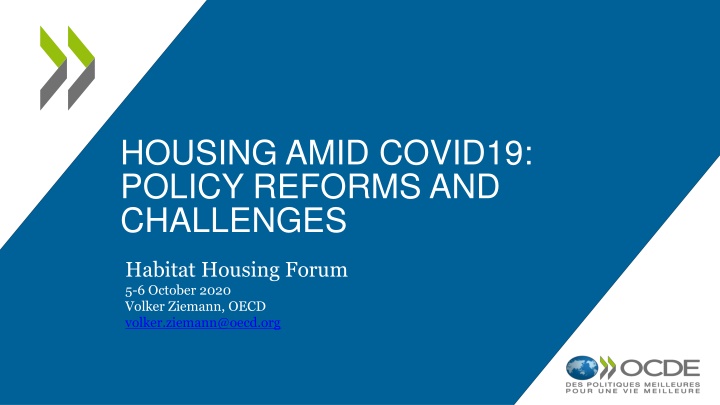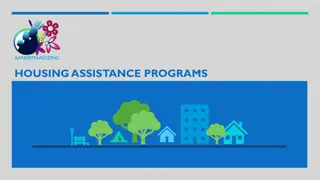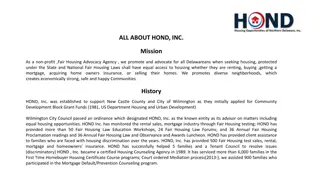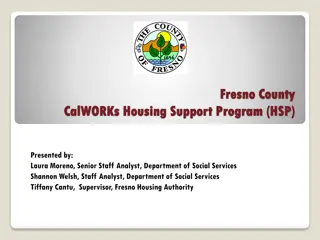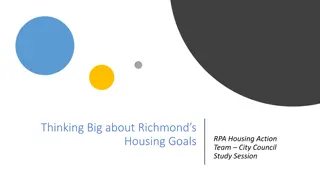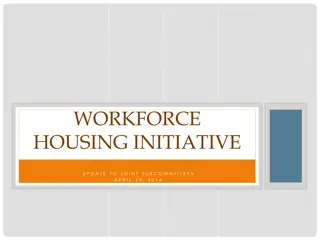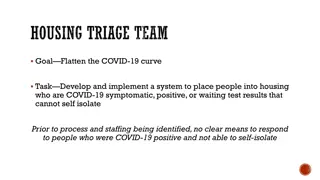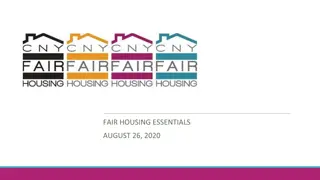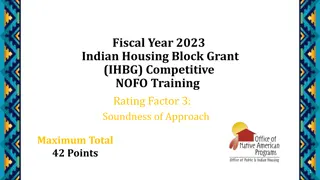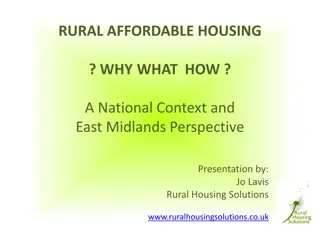Challenges and Opportunities in Housing Amid COVID-19
The COVID-19 pandemic has intensified pre-existing housing challenges, disproportionately affecting economically vulnerable families. Housing affordability issues, overcrowding, and policy trade-offs have come to the forefront. However, there is also an opportunity to address bottlenecks and drive essential reforms. Despite a severe hit to the construction sector, there are signs of recovery post-pandemic. The housing sector faces complex challenges but holds potential for significant positive changes.
Download Presentation

Please find below an Image/Link to download the presentation.
The content on the website is provided AS IS for your information and personal use only. It may not be sold, licensed, or shared on other websites without obtaining consent from the author.If you encounter any issues during the download, it is possible that the publisher has removed the file from their server.
You are allowed to download the files provided on this website for personal or commercial use, subject to the condition that they are used lawfully. All files are the property of their respective owners.
The content on the website is provided AS IS for your information and personal use only. It may not be sold, licensed, or shared on other websites without obtaining consent from the author.
E N D
Presentation Transcript
HOUSING AMID COVID19: POLICY REFORMS AND CHALLENGES Habitat Housing Forum 5-6 October 2020 Volker Ziemann, OECD volker.ziemann@oecd.org
OUTLINE Housing, where are we coming from ? Housing, what happened during the pandemic? Housing and resilience, what can policy do?
HOUSING where are we coming from ?
Housing has become increasingly unaffordable Changes in average spending shares of 23 OECD countries between 2005 and 2015 Source: Under Pressure: The Squeezed Middle Class, OECD (2019)
Housing is increasingly unaffordable Share of population in bottom income quintile spending more than 40% of disposable income on mortgage and rent Rent (private) Rent (subsidised) Owner with mortgage 60% 50% 40% 30% 20% 10% 0% Source: OECD Affordable Housing Database (http://oe.cd/ahd)
and inadequate Share of overcrowded households, by quintiles of the income distribution, in percent, 2018 or latest year bottom quintile 3rd quintile top quintile % 60 50 40 30 20 10 0 Source: OECD Affordable Housing Database (http://oe.cd/ahd)
HOUSING what happened during the pandemic?
COVID-19 has exacerbated existing problems Economically vulnerable families have been hit harder Housing inequalities have moved to the forefront Policy trade-offs have become more visible Risk of myopic overhaul of policy frameworks But also: opportunity to overcome bottlenecks and trigger long-awaited changes
Construction was severely hit, but bounced back Construction PMI during COVID-19 Note: A reading above 0 signals expansion and below 0 contraction. The indicator is equal to the original PMI published by Markit minus 50. Source: IHS Markit. 2
Impact differed considerably across the world Decline of Google Trends-based indicator mimicking the construction PMI during COVID-19 Note: The colours indicate the deterioration of business conditions in the construction sector during the COVID-19 crisis (proxied by seasonnally adjusted and demeaned Google Trend category Real Estate ). 2 Source: OECD Innovation Lab, Google Trends, and OECD analysis.
Most countries are back to or above pre-crisis confidence Google Trends-based indicator mimicking the construction PMI during COVID-19 2 Source: OECD Innovation Lab, Google Trends, and OECD analysis.
But consumer confidence remains subdued Consumer confidence: expected economic situation (0=remains the same) 2 Note: Five point scale: increase sharply(+2)/increase slightly(+1)/remain the same(0)/fall slightly(-1)/fall(-2). Balance is shown. Source: OECD Business Tendency and Consumer Opinion Surveys (MEI): http://dotstat.oecd.org/Index.aspx?DataSetCode=MEI_BTS_COS.
HOUSING and resilience : what can policy do?
Countries have introduced an array of relief measures Source: OECD, DIW, Arena Housing Project. 3
Most measures involve trade-offs Near-term affordability Financial and economic resilience Long-term efficiency Environmental sustainability Mobility Supply Defer or cap rent payments Suspend evictions or further regulate landlord-tenant relations Provide mortgage borrowers with tax relief some more supply but much higher prices if maintained Relax macroprudential policy settings if temporary Increase housing allowances if rights not portable Expand public capital spending on affordable housing supply Ease land-use restrictions without with environmental standards Note: Green means that the policy in the row supports progress towards the objective in the column; orange means that the policy in the row hampers progress towards the objective in the column; white means that there is no known effect. 4
Housing amid COVID19: An impossible trinity? Housing finance (banks) Profitability & liquidity Efficient housing markets Competition & profitability Affordability Housing supply (construction sector) Housing demand (households) 3
THANK YOU OECD s Horizontal Housing Project: https://www.oecd.org/economy/housing-and-the-economy/ OECD s COVID19 internet hub: http://www.oecd.org/coronavirus/en/ ( e.g. Cities Policy Responses , Housing amid COVID-19 )
